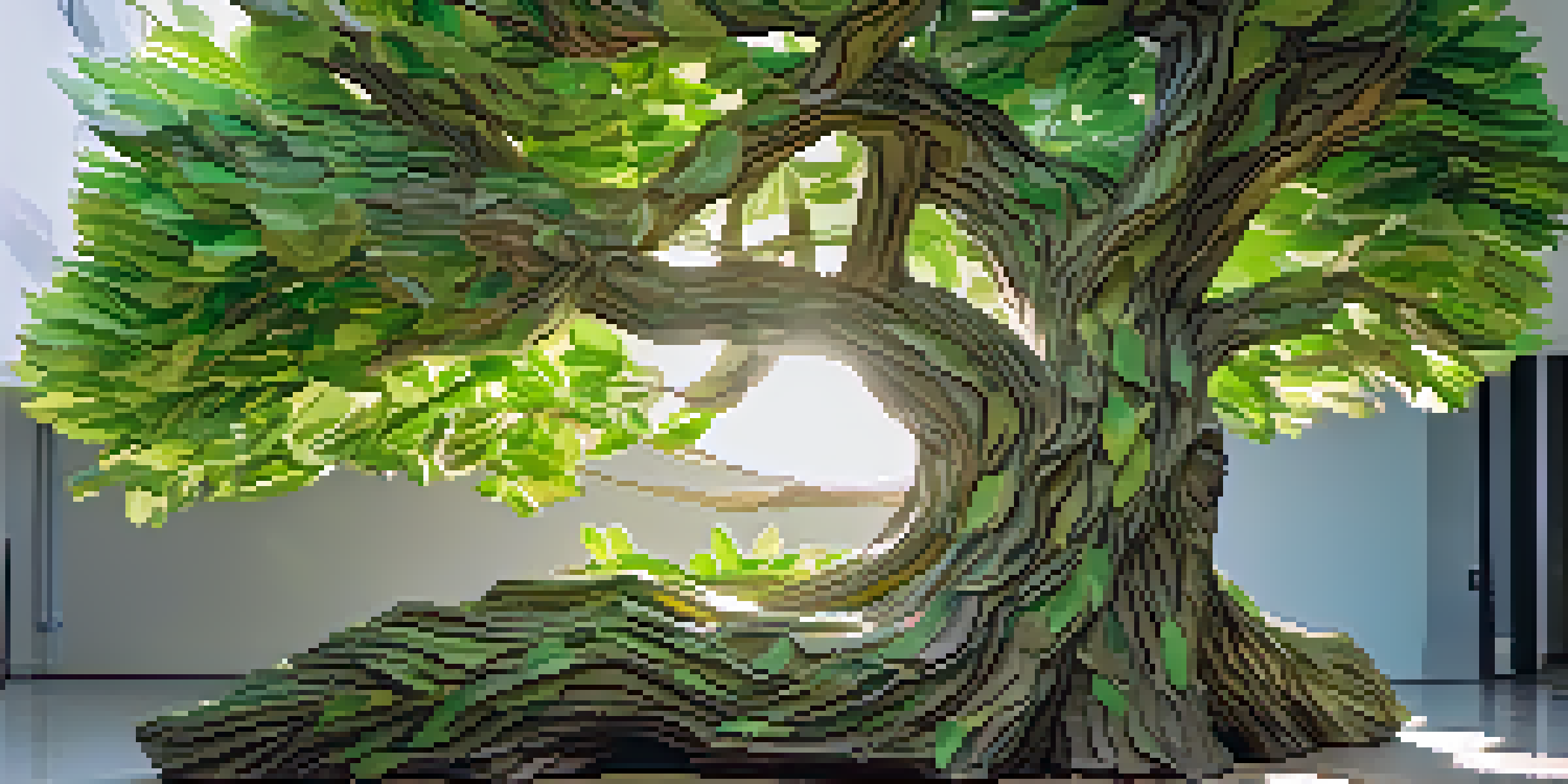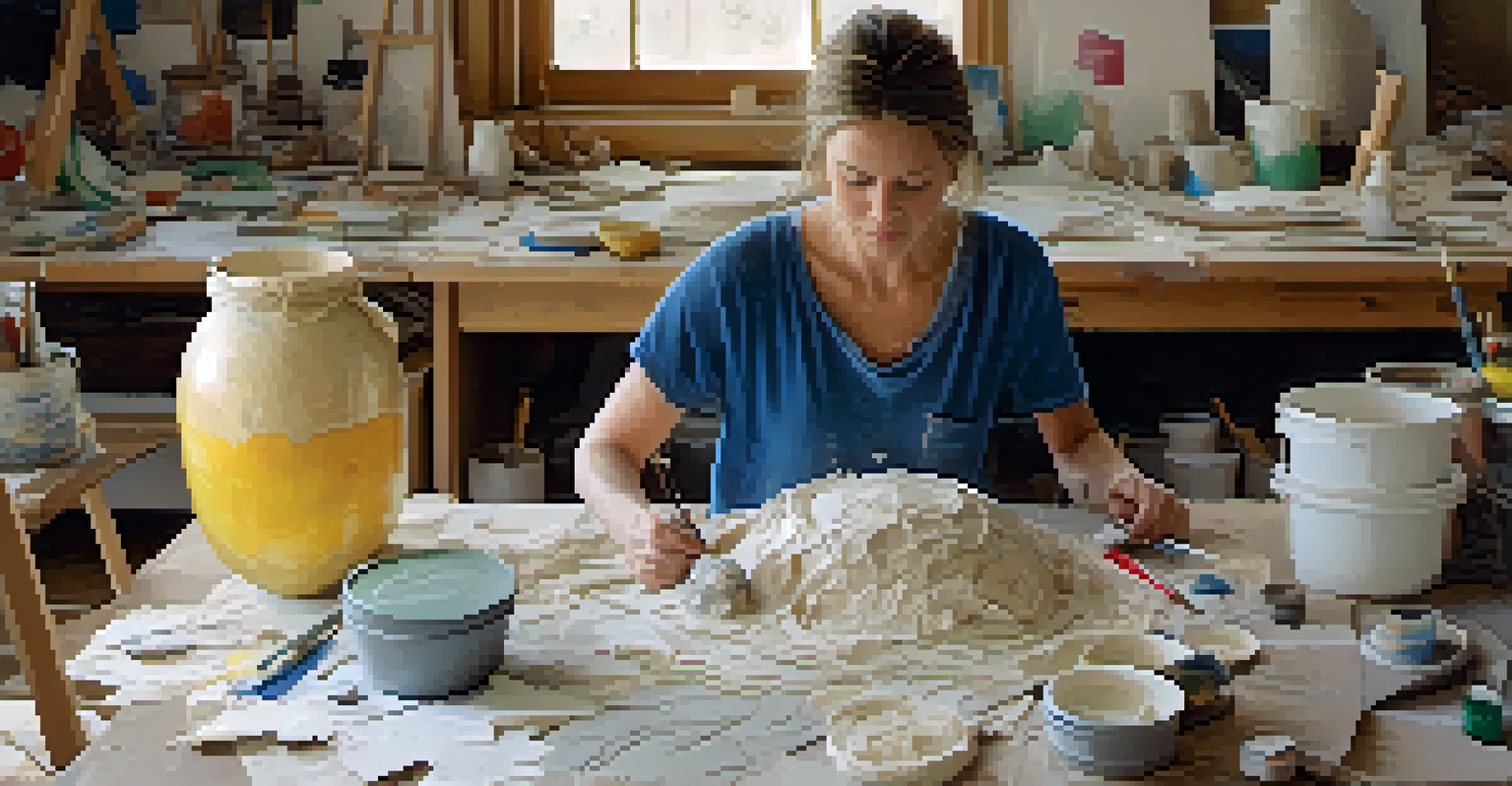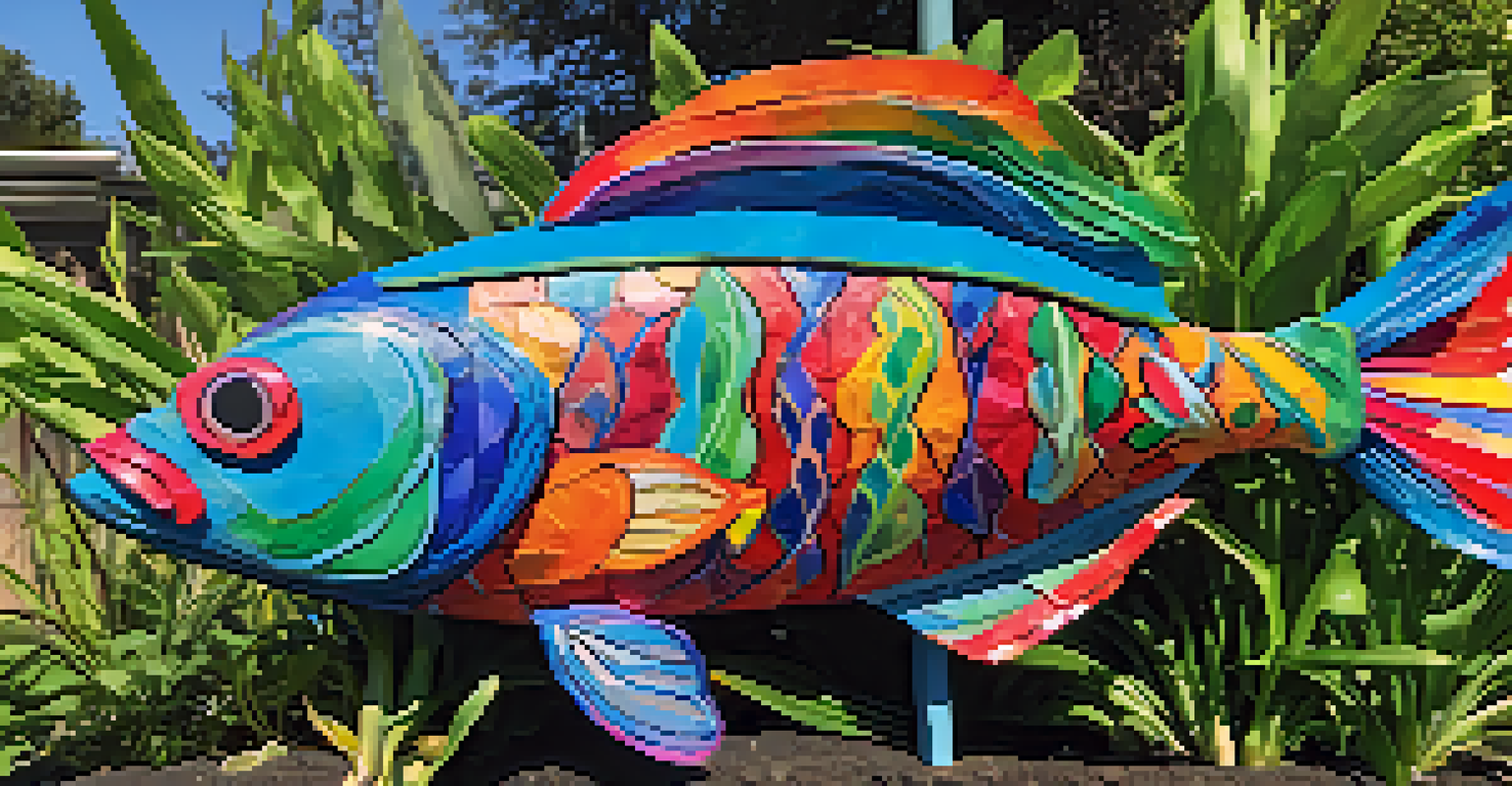Sustainable Art: Carving with Recycled Paper Mache

Understanding Sustainable Art and Its Importance
Sustainable art is not just a trend; it's a movement towards environmental responsibility. This form of art focuses on creating works that minimize harm to the planet while making a statement. By using materials that are often discarded, artists contribute to reducing waste and promoting recycling.
Art is not a thing; it is a way.
One of the most accessible mediums for sustainable art is paper mache, which traditionally uses flour and water mixed with paper. However, it can be transformed significantly by incorporating recycled paper, making it an even more eco-friendly option. This technique allows artists to create stunning pieces while being mindful of their environmental footprint.
Moreover, sustainable art often sparks conversations about environmental issues, encouraging viewers to reflect on their consumption habits. As artists embrace eco-friendly methods, they inspire others to think critically about their impact on the planet, fostering a collective sense of responsibility.
Gathering Materials: What You Need for Paper Mache
The beauty of creating with recycled paper mache lies in its accessibility. You can start with materials you already have at home, such as old newspapers, magazines, or scrap paper. This not only saves money but also gives a second life to items that would otherwise contribute to landfill waste.

In addition to paper, you'll need a binding agent, typically a mixture of water and flour, or white school glue. Both options are easy to find and safe to use, making this craft suitable for all ages. Don’t forget to gather tools like a mixing bowl, a brush for applying the paste, and a surface to work on.
Sustainable Art Reduces Waste
Sustainable art promotes environmental responsibility by using discarded materials, thereby minimizing waste and encouraging recycling.
While the focus is on recycling, consider using natural dyes or paints for finishing touches. These can be made from fruits, vegetables, or even coffee grounds, allowing you to maintain a sustainable approach throughout your project.
Creating Your Paper Mache Base: Step-by-Step Guide
To start your paper mache project, tear your recycled paper into strips or small pieces. The size can vary based on your design, but smaller pieces tend to adhere better to each other. This process is not only effective but also a great way to relieve stress; it's almost meditative!
The greatest threat to our planet is the belief that someone else will save it.
Next, prepare your paste by mixing equal parts of water and flour, stirring until smooth. If you're using glue, dilute it with a little water to achieve a similar consistency. Dip each piece of paper into the paste, ensuring it's fully coated before layering it over a balloon or mold of your choice.
Once you've created a solid base through several layers, allow it to dry completely. This could take anywhere from a few hours to overnight, depending on the humidity. Patience is key here; the stronger your base, the more durable your final piece will be!
Designing Your Artwork: Tips and Techniques
With your base ready, it’s time to let your creativity flow! You can choose to paint it, embellish it with other materials, or leave it natural for a rustic look. Consider themes that resonate with sustainability, such as nature or recycling symbols, to deepen the message behind your artwork.
Experimenting with different textures can also enhance your piece. For example, crumpling the paper before applying it can create interesting surfaces that catch the light beautifully. The goal is to make your art not just visually appealing but also thought-provoking.
Accessible Paper Mache Materials
Creating paper mache art is accessible as it utilizes common household items, allowing anyone to engage in eco-friendly crafting.
Don’t forget to share your process as you create! Documenting your journey can inspire others to take up sustainable art, while also showcasing the importance of reusing materials. Plus, it’s a great way to engage with a community that shares your passions.
Finishing Touches: Sealing and Protecting Your Art
Once your artwork is fully dry and painted, it’s essential to seal it to ensure its longevity. A simple solution is to use a spray sealant or a mixture of water and glue to coat the surface. This step not only protects your piece from moisture but also enhances its visual appeal.
If your artwork is intended for outdoor display, consider using a waterproof sealant to guard against the elements. This is especially important if you’re showcasing your sustainable message in a garden or public space. Remember, a well-sealed piece will maintain its beauty for years to come!
Before displaying, take a moment to reflect on your creation and its journey. Each piece tells a story of sustainability, creativity, and the importance of reducing waste. Sharing this story can inspire others to appreciate the beauty of art made from recycled materials.
Sharing Your Sustainable Art: Community and Impact
Once you've completed your masterpiece, consider showcasing it in local galleries or community events. Many towns and cities host art fairs that focus on sustainable practices, providing a platform for artists who share your vision. This not only gives your work exposure but also connects you with like-minded individuals.
Social media is another powerful tool for sharing your art. Platforms like Instagram and Pinterest are filled with communities celebrating sustainable art. By sharing your process, techniques, and finished pieces, you can inspire others to embark on their own creative journeys using recycled materials.
Art as a Catalyst for Change
Sustainable art not only inspires creativity but also sparks conversations about environmental issues, motivating others to reflect on their consumption habits.
Ultimately, the impact of your artwork extends beyond its visual appeal. By participating in the sustainable art movement, you're contributing to a greater conversation about the importance of caring for our planet. Your creations can motivate others to rethink their approach to art and consumption.
The Future of Sustainable Art: Trends and Innovations
As awareness of environmental issues grows, sustainable art continues to evolve. New materials and techniques are emerging, pushing the boundaries of what can be created with recycled elements. From 3D-printed sculptures made from recycled plastics to installations that interact with nature, the possibilities are expanding.
Artists are also collaborating with scientists and environmentalists to incorporate technology into their work. For instance, some are using augmented reality to enhance the viewer's experience or educate them about sustainability. This fusion of art and science is paving the way for innovative approaches to environmental storytelling.

As you dive into the world of sustainable art, consider how you can contribute to this exciting future. Your unique voice and vision can play a significant role in shaping the narrative around art and sustainability, sparking change and inspiring creativity in others.